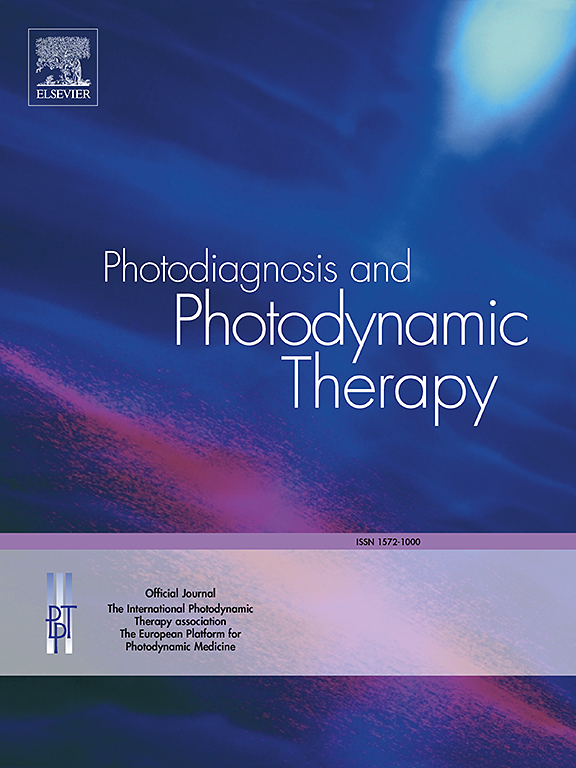The application of photodynamic therapy in recurrent genital herpes
IF 3.1
3区 医学
Q2 ONCOLOGY
引用次数: 0
Abstract
Background
Frequently, recurrence of genital herpes imposes significant physical and psychological burdens on patients, and existing treatments are often ineffective in preventing recurrence. Previous studies have indicated that photodynamic therapy (PDT) showed promising outcomes in the treatment of labial herpes simplex virus (HSV) infections; however, its efficacy for genital herpes remained unclear.
Method
The study screened patients with genital herpes at Daping Hospital from July 2020 to May 2024. Patients were divided into two groups based on whether they received PDT treatment. Over a one-year follow-up period, patients' healing time and recurrence rates were compared between the two groups. The cumulative incidence of recurrence and restricted mean survival time (RMST) were used to assess outcomes. Propensity score matching (PSM) was employed to minimize bias.
Result
A total of 41 patients enrolled in our study, with 8 (19.5 %) received PDT. The non-PDT group exhibited a slower skin lesion healing time, averaging at 7.2 days compared to 5.4 days in the PDT group. A significant difference was observed in the cumulative incidence of recurrence between the PDT and non-PDT groups (37.5 % versus 71.4 %) after PSM. The RMST in the PDT group was 9.94 days, compared to 5.13 days in the non-PDT group before PSM, and 4.14 after PSM.
Conclusion
Our study demonstrated that the PDT effectively reduced lesion recovery time and delayed recurrences of genital herpes. We recommend considering PDT as a potential treatment option for patients with recurrent genital herpes.
光动力疗法在复发性生殖器疱疹中的应用。
背景:生殖器疱疹的频繁复发给患者带来了巨大的生理和心理负担,而现有的治疗方法往往无法有效预防复发。以往的研究表明,光动力疗法(PDT)在治疗唇疱疹病毒(HSV)感染方面有良好的疗效,但对生殖器疱疹的疗效仍不明确:研究筛选了2020年7月至2024年5月在大坪医院就诊的生殖器疱疹患者。根据患者是否接受PDT治疗将其分为两组。随访一年,比较两组患者的治愈时间和复发率。复发累积发生率和限制性平均生存时间(RMST)用于评估结果。为减少偏差,采用了倾向得分匹配法(PSM):共有 41 名患者参与了研究,其中 8 人(19.5%)接受了 PDT 治疗。非 PDT 组皮损愈合时间较慢,平均为 7.2 天,而 PDT 组为 5.4 天。在 PSM 后,PDT 组和非 PDT 组的累积复发率(37.5% 对 71.4%)有明显差异。PSM前,PDT组的RMST为9.94天,而非PDT组为5.13天,PSM后为4.14天:我们的研究表明,光动力疗法能有效缩短皮损恢复时间,延缓生殖器疱疹复发。我们建议将光导疗法作为复发性生殖器疱疹患者的潜在治疗方案。
本文章由计算机程序翻译,如有差异,请以英文原文为准。
求助全文
约1分钟内获得全文
求助全文
来源期刊

Photodiagnosis and Photodynamic Therapy
ONCOLOGY-
CiteScore
5.80
自引率
24.20%
发文量
509
审稿时长
50 days
期刊介绍:
Photodiagnosis and Photodynamic Therapy is an international journal for the dissemination of scientific knowledge and clinical developments of Photodiagnosis and Photodynamic Therapy in all medical specialties. The journal publishes original articles, review articles, case presentations, "how-to-do-it" articles, Letters to the Editor, short communications and relevant images with short descriptions. All submitted material is subject to a strict peer-review process.
 求助内容:
求助内容: 应助结果提醒方式:
应助结果提醒方式:


